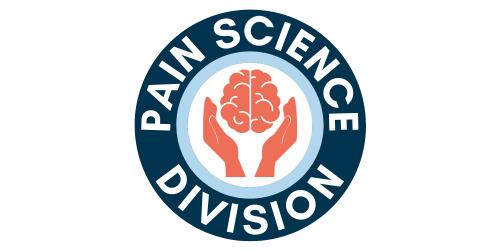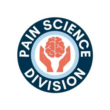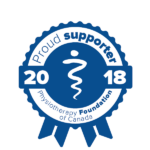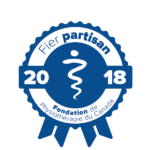Advocacy for pain management

By Neil Pearson, PT
Advocacy is defined as the act or process of supporting a cause or proposal.
I have not thought of myself as an advocate. Apparently, the concept of advocacy, at least for me, is like the concept of pain for many of us – we might not stop to think about what we think about it. Unlike advocacy, pain is something I think about every day. Even during contemplative practice, I continue to question, explore, and evolve my understanding of this complex human experience. Contemplating pain is part of me, as is teaching about it and integrating it into physiotherapy and yoga therapy. It is only now, when asked to write about advocacy that I realize that this too is a big part of who I am, and of what so many of us have been working on.
My first 10-12 years as a PT were focused on growing as a clinician. I was discovering what aspects of this profession were my future. If I was advocating for anything it was for me. Then, over the past 25 years or so, my focus turned outward. Not only did I turn to teaching, but to teaching a topic that most people did not think was needed. Success with teaching about pain required advocating for education about pain. Even today, health professionals, just like the yoga teachers and therapists I have taught, still resist learning about pain, and can even argue against the need for pain education when “they talk about pain all the time in their training”. Although awareness is growing, most do not have a full awareness of the impact of pain on society, or of the costs to the individual (biopsychosocial, spiritual and financial). Worse still, many have no idea that there are ways to help people living in pain beyond fixing what they consider to be a broken painful bit of anatomy. If you read my CV will not see a section on advocacy. I think it is time to change that! Teaching has been the agent through which I have advocated for change. Teaching has provided credibility, and a way that others can hear these not-so-popular and at-times easily brushed-off messages about pain.
It is not easy to advocate for pain care. We are trying to guide people to pay attention to three related and complex topics: pain, people living in pain, and pain care. Substantial changes are required in understanding and in actions related to each of these. Most people think they know everything about pain – because it is obviously what happens when the body is injured (“nociception is necessary for and the primary determinant of pain”). Further, it is not easy to advocate for pain care because we might be perceived as individuals who are taking advantage of the suffering of others to sell ‘snake-oil’. My experience has been that owning a business which provides even education about pain care while also advocating for people in pain is often harshly interpreted as an unacceptable conflict of interest.
There has been an evolution of pain advocacy in Canada and around the world. I appreciate being part of it, and receiving support and guidance from others who have pointed me in the right direction. Initially, in the late 1990’s I was focused on making changes within CBI Heath clinics in BC and western Canada. Advocacy was not needed, since staff took these courses. Yet even then, the course attendance was competing with the more ‘fix-it’ courses in rehab. Next came making change through developing and presenting post-licensure courses to physiotherapists. This was less successful until Diane Jacobs contacted me, and started us (Diane, David, Lesley, Debbie, Susan, Mike, Sebastian) on the path of creating the Pain Science Division. We believed that we might be able to raise our voices and impact pain education and pain care at the national level. It was around that time that my work shifted more to advocacy. It felt like we were a group working on a cause. Most physios do not know that our pain science group was originally rejected as a new CPA division and needed to continue our work without CPA for some time. In retrospect, we might have encountered less resistance had we presented our views as something to add to physio care rather than a different approach to pain care. Even though people with persisting pain are not best served by physiotherapy that only holds a biomedical approach, we might have succeeded more with an offer of a biopsychosocial approach – one that was an option when anatomy, pathology and biomechanics don’t provide the answer. Had we learned from those who understand advocacy and creating social change, the pain science division might be a couple years older.
At the heart of our cause is an understanding that pain and pain-related disability are not immutable. At the heart of advocacy in pain care is the need to reach further and across professional boundaries.
- Many family doctors do not have codes for people with chronic pain, so the funding agencies cannot see its burden. Maybe we can advocate with the doctors?
- Physiotherapists typically provide the greatest volume of care to people in pain during interdisciplinary programs, yet we are rarely at the table with the Ministry of Health and other funders when complex pain management is discussed. Maybe we need to advocate for ourselves?
- When patients succeed in getting back to meaningful life even though the pain does not resolve, funders and employers can treat the individual as a failure (as if this is not an equally worthy outcome). There is no question that patients need us to advocate for them.
- Often times patients and patient groups feel as if they are fighting against giants. We can bring our power and knowledge to create positive change in their health care, but as a profession we might ask why we have done little to advocate for people in pain.
Advocacy groups like Pain BC, Pain Canada, and the People in Pain Network are wonderful non-profits which support the changes we need to decrease the impacts of pain on individuals and society. I was honoured to sit on the Board of Directors of Pain BC, to be a member of the first Canadian Pain Summit, and to work closely with Heather Divine and the People in Pain Network in bringing pain education to small communities across mainland BC and Vancouver Island. Through these groups I learned the power of reaching beyond our profession to join with passionate people with diverse experiences and skillsets while we advocated for pain care.
Recently I had the opportunity to advocate for Canadian veterans. Thanks to the prep-work of many other advocates coming before me, and the willingness of Veterans Affairs Canada (VAC) to listen to evidence from science and from the lived experience of Canadian veterans, we made a positive change in the interdisciplinary care covered by VAC. As of Nov 2022, Canadian veterans have the option to receive yoga therapy as part of their interdisciplinary care. This experience clearly shows me the power of professions and patients joining together to advocate for change.
During the earlier years of Pain BC, we joked about the difficulty of what we were doing, as if we were “just trying to change the colour of the sky”. We advocated for change in pre-licensure education and post-licensure education of health professionals, for change in pain research funding, change in billing codes and practices, increase in the number of interdisciplinary clinics, development of community-based pain care and increased awareness that pain is an important public health and social issue. When we started the Pain Science Division, we had a similarly broad focus, yet within the Canadian physiotherapy world. In both organizations, there has been considerable change in some areas. Our voices have been heard above all the others calling for and directing change, which is impressive given that unlike many other health care causes, pain care advocacy in Canada and in physio does not have a fundraising event, nor does it have celebrity backing the cause. These two factors can be instrumental in creating change in health care.
Looking to the future, there are more pain related issues on which I will advocate. I want the public and health professionals to understanding the benefits of yoga as an option for people with persisting pain. I will also advocate for more patience and compassion to those who have not yet reconceptualized pain, or are not ready to evolve their views on pain and pain care. Most of us start with a biomedical or biomechanical view of pain. Change takes time and effort. We often require embodied experiences to start the shift away from deeply embedded misconceptions about pain. Further, in order to evolve our understanding, we might require repeated embodied experiences that are inconsistent with previous view. This, by the way is one of the reasons that yoga can be helpful. It provides repeated bio, psycho, social and spiritual experiences that are inconsistent with previous beliefs about pain and pain care. In other words, it provides an embodied path of evolving our beliefs, of influencing pain and learning how to move and live with more ease. My final thoughts on advocacy include a warning and hope. As an advocate, others can decide that we are biased and closed-minded. No doubt there are some who think I am against pain management that is not non-pharmacological, that I teach all my patients yoga, and that the only way I educate patients about pain is the Explain Pain/Pain Revolution way. Yet advocacy is not the same as trying to sell someone on a specific idea or product. When we advocate for evidence-informed pain care we are saying that there is hope for people in pain. When we advocate for changes in health profession education, we are stating that more patients will experience greater improvements when we actually align clinical practice with the evidence.



